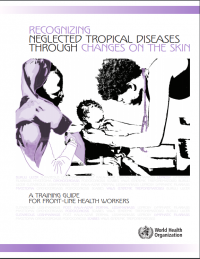Recognizing neglected tropical diseases through changes on the skin

Review / Summary:
The skin of a patient is the first and most visible structure of the body that any health-care worker encounters during the course of an examination. To the patient, it is also highly visible, and any disease that affects it is noticeable and will have an impact on personal and social well-being. The skin is therefore an important entry point for both diagnosis and management. Many diseases of humans are associated with changes to the skin, ranging from symptoms such as itching to changes in colour, feel and appearance. The major neglected tropical diseases (NTDs) frequently produce such changes in the skin, re-enforcing the feelings of isolation and stigmatization experienced by patients affected by these diseases. Indeed, these are often the first signs that patients will notice, even before changes in internal organs or other systems occur. The following NTDs all have prominent skin changes at some stage in their evolution.
Purpose of this guide: This training guide explains how to identify the signs and symptoms of neglected tropical diseases of the skin through their visible characteristics. It also contains information on how to diagnose and manage common skin problems that front-line health workers may encounter.
Target audience: The guide is intended for use by front-line health workers without specialist knowledge of skin diseases. Pathways for more detailed investigation and/or management are described but, often, this will involve referral to a specialist service.
